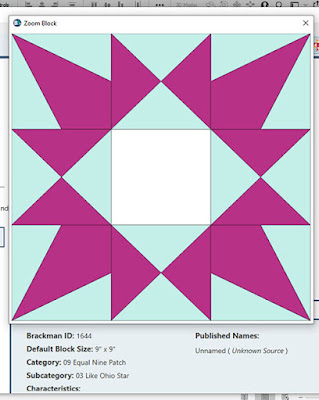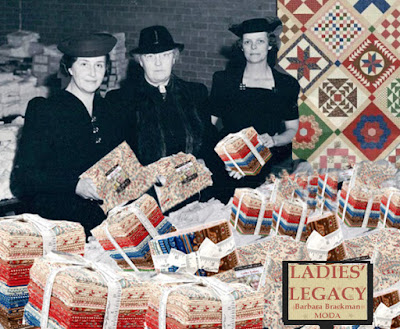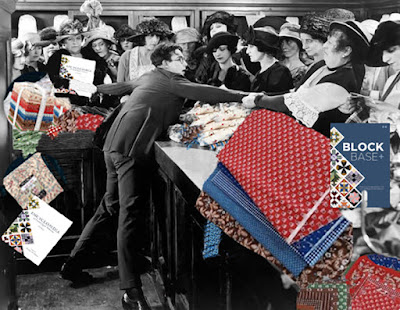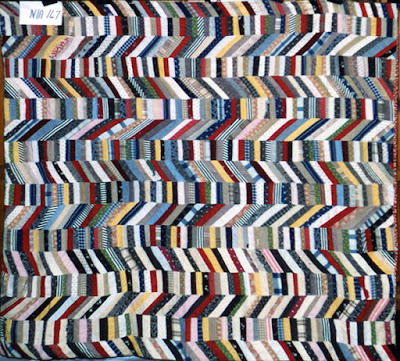Tuesday, March 30, 2021
Log-A-Rhythm Jelly Roll Quilt
Friday, March 26, 2021
Unpublished Regional Patterns in the Encyclopedia
https://goschenhoppen.pastperfectonline.com/webobject/8246C276-C024-4E3D-A176-418913431006
People call it Flying Crow today but we don't know how old that name is. I thought I'd add it to the index because it is distinctive and such a good clue to a Pennsylvania origin. In the Encyclopedia it is labeled, "Unknown from a Pennsylvania quilt dated 1853." You don't get quite as much information in BlockBase+ (why you need both the book & the program.)
https://quiltindex.org/view/?type=page&kid=35-90-278
I also numbered regional patterns found other places.
I usually file these digitally rather than printing them out, saving them either as a PDF or do a screen shot of the preview. I condense the templates too by using the move tool (that arrow at top right)
Tuesday, March 23, 2021
Virtual Booth Spring 2021
Sunday, March 21, 2021
Quilt Index Entertainment
and information for my Ladies' Aid Album: New York Sampler BOM.
If you go to the search page and look for quilts made in New York you get nearly 4,000 hits. Too many for me to deal with, so I decided I would look at New York quilts county by county---looking for regional differences in style and pattern.
counties like Tioga and St. Lawrence. When I get around to Washington I will have to narrow my search.
Thursday, March 18, 2021
Southern Twins
We're looking at a pair of quilts so similar I had the pictures filed as the same quilt until I looked a little closer. The most obvious difference is that one is sashed with a different color and one is in a lot better shape than the other. They're attributed to the Carolinas.
The North Carolina quilt was documented in their state project, attributed by the family to Annie Daly Creech (1827-1904) who spent most of her life in Goldsboro, Wayne County.
Years ago documenter Erma Kirkpatrick thought it dated to before the Civil War and she noted it was both pieced and appliqued. Although she might have been referring to the blocks being joined as the piecing she also might have been talking about the leaves being pieced into a circle, which sometimes was the technique used in this design. The fruit at the top was also sometimes pieced into a circle.
The McKissick Museum at the University of South Carolina owns the second one, attributed to Adella Hays, about 1850.
The chintz-scale floral borders in the two quilts are different. Even though we cannot see much of Annie's we do get a good view of Adella's. Both are cut to feature a stripe of florals. The idea of bordering a conventional applique quilt with a chintz floral is SO Carolina. They did love their chintz and they had a lot of it.



























































